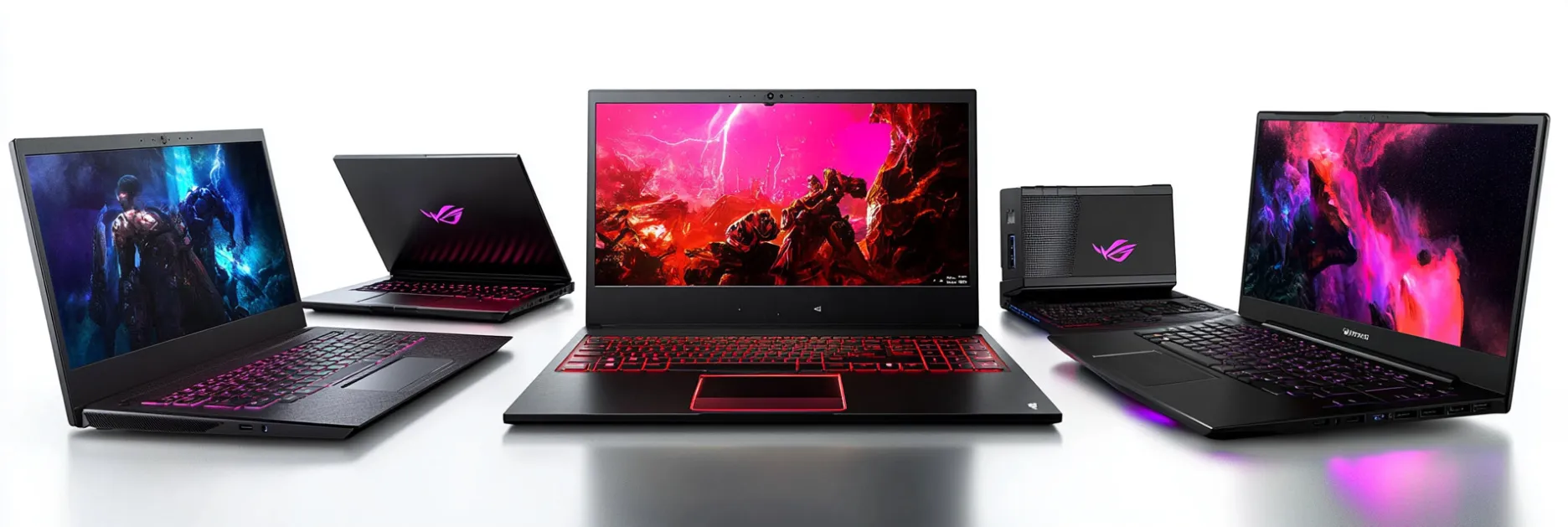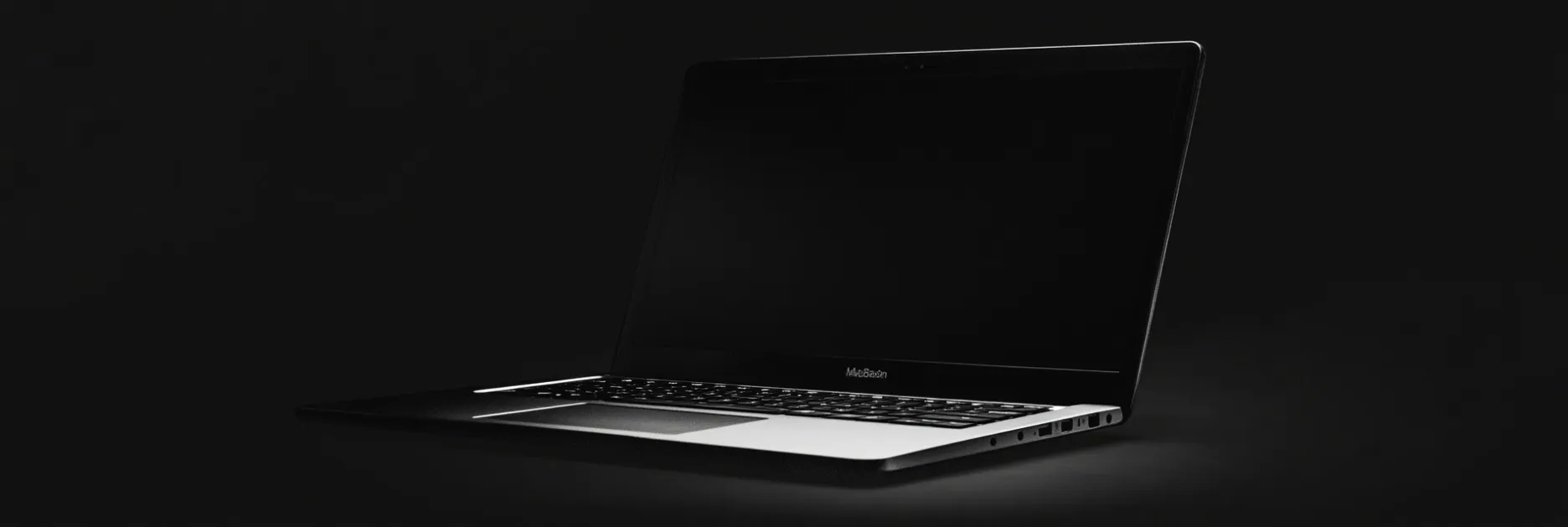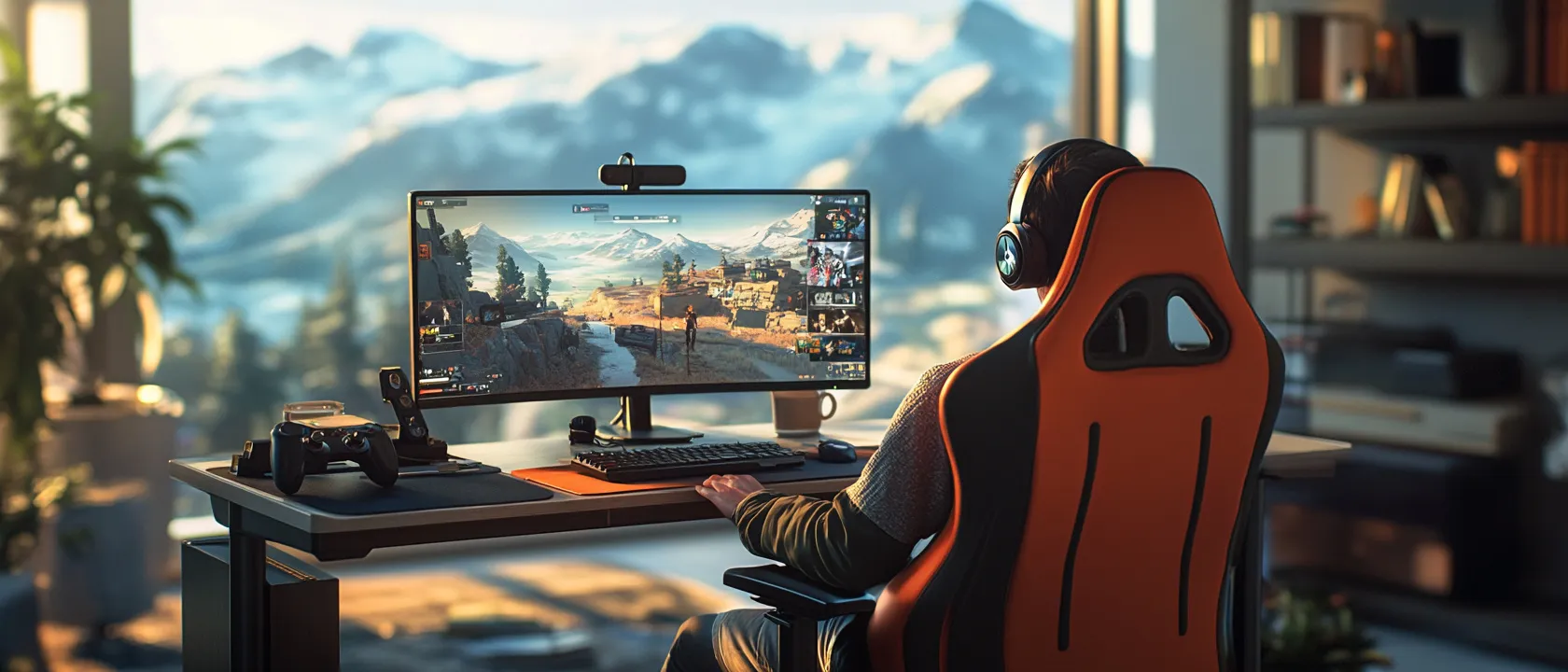In the ever-evolving landscape of gaming technology, finding a laptop that delivers exceptional gaming performance without emptying your bank account has become increasingly feasible. Gone are the days when “budget gaming laptop” meant settling for subpar experiences and constant frustration. Today’s market offers surprisingly capable options that provide impressive gaming capabilities at accessible price points. This comprehensive guide explores the best budget-friendly gaming laptops of 2025 that refuse to compromise on the elements that matter most to gamers.
Understanding the Budget Gaming Landscape in 2025
The definition of “budget” in gaming laptops has shifted dramatically over the past few years. While premium models still command prices well above $2,000, the $700-$1,200 range now offers machines that can handle most modern games with impressive fidelity. This democratization of gaming power stems from several industry developments:
- Increased competition between chip manufacturers (AMD, NVIDIA, and Intel)
- Manufacturing improvements that have reduced production costs
- The normalization of gaming as a mainstream hobby, expanding the market
- The optimization of games to run efficiently across various hardware configurations
These factors have created a sweet spot where budget-conscious gamers can find laptops that deliver exceptional value without significant compromises. Let’s explore what to prioritize when shopping in this category before diving into the top contenders.

Key Components That Matter Most in Budget Gaming Laptops
GPU: The Heart of Gaming Performance
When evaluating a budget gaming laptop, the graphics processing unit (GPU) should be your primary focus. This component has the most direct impact on gaming performance, determining which games you can play and at what settings.
In 2025, entry-level dedicated GPUs like the NVIDIA RTX 4060 or AMD Radeon RX 7600M provide sufficient power for most modern games at 1080p resolution with medium to high settings. More demanding titles might require some settings adjustments, but the days of unplayable framerates on budget hardware are largely behind us.
CPU: Balancing Cores and Clock Speeds
While the GPU handles most gaming graphics workloads, the processor remains crucial for overall system performance. For budget gaming laptops, look for:
- At least 6 cores/12 threads for modern gaming demands
- Base clock speeds of 3.0GHz or higher
- Good thermal design to maintain performance during extended gaming sessions
Current generation Intel Core i5-13500H/14500H or AMD Ryzen 5 7640HS/8640HS processors offer excellent performance in this category without the premium price of their higher-tier siblings.
RAM: Don’t Go Below the Minimum
Even at budget price points, 16GB of RAM should be considered the minimum standard for a gaming laptop in 2025. While 8GB configurations still exist, they create noticeable bottlenecks in modern gaming environments and limit multitasking capabilities.
Look for dual-channel configurations (2x8GB rather than 1x16GB) for optimal performance, and if possible, choose laptops with user-accessible memory slots for future upgrades.
Storage: Speed and Capacity Tradeoffs
The days of mechanical hard drives in gaming laptops are essentially over. Even budget models now include NVMe SSD storage, though capacity often becomes the compromise at lower price points.
A 512GB SSD represents the practical minimum for a gaming setup, though 1TB is vastly preferable given the size of modern game installations. Some budget models offer hybrid storage solutions with smaller SSDs paired with larger HDDs, which can work well if properly managed.
Display: Where Many Budget Options Cut Corners
Budget laptop displays have improved dramatically, but this remains an area where manufacturers often make compromises. For an acceptable gaming experience, prioritize:
- 1080p resolution (still the sweet spot for balanced performance and visual quality)
- 144Hz refresh rate (a significant improvement over standard 60Hz panels)
- IPS or equivalent technology for better color reproduction and viewing angles
- Under 5ms response time to minimize ghosting in fast-paced games
Higher-end features like QHD resolution, 240Hz+ refresh rates, and advanced color accuracy remain largely confined to premium models, though we’re seeing these features slowly trickle down to higher-end budget options.
Cooling: The Unsung Hero of Sustained Performance
Perhaps the most crucial yet overlooked aspect of budget gaming laptops is thermal management. Powerful components generate significant heat, and inadequate cooling leads to thermal throttling that reduces performance regardless of the components’ theoretical capabilities.
Look for models with thoughtful cooling designs featuring multiple heat pipes, strategically placed vents, and effective fan implementations. User reviews often provide the best insight into real-world thermal performance, which specification sheets rarely address adequately.
Now that we’ve established the critical components, let’s examine the standout budget gaming laptops that deliver exceptional value without compromising the gaming experience.
Top Budget Gaming Laptops That Deliver Above Their Price Class
1. Legion 5 (2025) – The All-Around Champion
Lenovo’s Legion line continues to set the standard for balancing performance, build quality, and price. The 2025 Legion 5 exemplifies what a budget gaming laptop should aspire to be, with thoughtful design choices that prioritize gaming experience over flashy extras.
Key Specifications:
- Processor: AMD Ryzen 5 8640HS (6-core/12-thread)
- Graphics: NVIDIA GeForce RTX 4060 (8GB GDDR6)
- RAM: 16GB DDR5-5200 (2x8GB, upgradeable to 32GB)
- Storage: 1TB PCIe Gen 4 NVMe SSD
- Display: 15.6″ 1080p IPS, 165Hz, 300 nits, 100% sRGB
- Cooling: Legion ColdFront 3.0 with dual fans and quad vents
- Battery: 80Wh with up to 6 hours of mixed-use runtime
- Price Range: $949-$1,099 depending on configuration and sales
Why It Stands Out:
The Legion 5 excels by avoiding obvious weaknesses. Where other budget laptops might include a powerful GPU but pair it with a substandard display or inadequate cooling, Lenovo delivers a remarkably well-balanced machine. The cooling system deserves special mention, as it maintains performance during extended gaming sessions without the jet-engine noise common to budget gaming laptops.
The build quality also impresses, with a durable chassis that avoids the cheap, plastic feel of many competitors. The keyboard provides tactile feedback with 1.5mm travel and anti-ghosting technology, essential for competitive gaming. Port selection is generous and thoughtfully placed, with most connections positioned at the rear to improve cable management.
For gamers seeking the best all-around performer in the budget category, the Legion 5 consistently delivers beyond expectations, especially when purchased during one of Lenovo’s frequent sales events.
2. Victus 16 (2025) – Maximum Performance per Dollar
HP’s Victus line has evolved from a budget afterthought to a serious contender, with the 2025 model offering perhaps the strongest raw performance metrics in its price class. While it makes some concessions in build materials to reach its aggressive price point, the gaming experience remains exceptional.
Key Specifications:
- Processor: Intel Core i5-14500H (12-core: 4P+8E)
- Graphics: AMD Radeon RX 7600M XT (8GB GDDR6)
- RAM: 16GB DDR5-5600 (2x8GB)
- Storage: 512GB PCIe Gen 4 NVMe SSD (expandable)
- Display: 16.1″ 1080p IPS, 144Hz, 350 nits
- Cooling: Five-way airflow with liquid metal thermal compound
- Battery: 70Wh with around 5 hours of mixed-use runtime
- Price Range: $799-$949 depending on sales and configuration
Why It Stands Out:
The Victus 16 prioritizes core gaming components above all else, delivering framerates that often match laptops costing hundreds more. The combination of Intel’s latest-generation i5 processor and AMD’s efficient yet powerful GPU creates a surprisingly capable gaming platform that handles everything from competitive esports titles to demanding AAA experiences.
The increased screen size (16.1″ vs. the standard 15.6″) provides a more immersive experience without significantly increasing the overall footprint. HP has also improved the thermal solution substantially compared to previous generations, addressing a common criticism of the Victus line.
Where compromises do appear is in the chassis construction, which uses more plastic than competitors, and in the base storage configuration, which at 512GB will require careful management of game installations. However, the storage is easily upgradeable, and the performance-per-dollar ratio remains unmatched in this segment.
3. TUF Gaming A15 (2025) – Durability Meets Performance
ASUS has positioned the TUF Gaming series as the more affordable alternative to their premium ROG line, but the 2025 A15 model demonstrates that “budget” doesn’t mean fragile or underpowered. This laptop emphasizes reliability and longevity while delivering solid gaming credentials.
Key Specifications:
- Processor: AMD Ryzen 7 7840HS (8-core/16-thread)
- Graphics: NVIDIA GeForce RTX 4060 (8GB GDDR6)
- RAM: 16GB DDR5-5200 (expandable to 32GB)
- Storage: 1TB PCIe Gen 4 NVMe SSD
- Display: 15.6″ 1080p IPS, 144Hz, MUX Switch support
- Cooling: Military-grade enhanced cooling with liquid metal compound
- Battery: 90Wh (largest in class) with up to 8 hours mixed-use
- Price Range: $999-$1,199 depending on configuration
Why It Stands Out:
The TUF Gaming A15 earns its military-grade durability certification (MIL-STD-810H) without sacrificing gaming performance, making it ideal for gamers who need a more rugged portable solution. The chassis withstands minor drops, vibration, and temperature extremes better than most competitors, while still housing components that deliver excellent gaming performance.
ASUS has made significant improvements to the thermal solution, addressing a persistent criticism of earlier TUF models. The 2025 version maintains lower temperatures under sustained load, allowing the capable components to perform closer to their theoretical maximums.
The stand-out feature might be the 90Wh battery—unusually large for a budget gaming laptop—which provides genuine portability rare in this category. Combined with AMD’s power-efficient processor, the A15 can actually function as a productivity machine away from power outlets, unlike many gaming laptops that last barely two hours on battery.

4. Nitro 5 (2025) – The Entry-Level Champion
Acer’s Nitro 5 has long served as the gateway to PC gaming for budget-conscious consumers, and the 2025 model continues this tradition while addressing many historical weaknesses of the line. Coming in at the lowest price point of our recommendations, it delivers remarkable value for first-time gaming laptop buyers.
Key Specifications:
- Processor: Intel Core i5-14450H (10-core: 2P+8E)
- Graphics: NVIDIA GeForce RTX 4050 (6GB GDDR6)
- RAM: 16GB DDR5-5200 (2x8GB)
- Storage: 512GB PCIe Gen 4 NVMe SSD + empty expansion slot
- Display: 15.6″ 1080p IPS, 144Hz, 300 nits
- Cooling: Quad-exhaust design with twin fans
- Battery: 57Wh with approximately 4-5 hours of mixed-use
- Price Range: $749-$899 depending on configuration and sales
Why It Stands Out:
At a price point that previously offered only integrated graphics or entry-level dedicated GPUs, the Nitro 5 provides access to NVIDIA’s RTX architecture, including DLSS 3.5 with frame generation that significantly improves performance in supported titles. This makes it particularly appealing for gamers on the strictest budgets who still want access to modern gaming features.
Acer has refined the chassis design, replacing the somewhat gaudy aesthetic of previous generations with a more subdued look that wouldn’t be out of place in a classroom or office. The keyboard has also been improved with 1.6mm travel and highlighted WASD keys that enhance the gaming experience.
While the RTX 4050 represents the entry point to NVIDIA’s current gaming lineup, it proves surprisingly capable at 1080p resolution, especially in esports titles where it easily maintains framerates that take full advantage of the 144Hz display. More demanding games require settings adjustments but remain entirely playable.
5. Dell G15 (2025) – Corporate Resources, Gaming Focus
Dell leverages its massive manufacturing scale and supply chain advantages to deliver the G15, a gaming laptop that benefits from the company’s enterprise-level quality control while focusing squarely on gaming essentials. The result is a machine that offers exceptional reliability with gaming-first design choices.
Key Specifications:
- Processor: AMD Ryzen 5 7640HS (6-core/12-thread)
- Graphics: NVIDIA GeForce RTX 4060 (8GB GDDR6)
- RAM: 16GB DDR5-4800 (2x8GB, upgradeable)
- Storage: 1TB PCIe Gen 4 NVMe SSD
- Display: 15.6″ 1080p WVA (Wide Viewing Angle), 165Hz, ComfortView Plus
- Cooling: Alienware-inspired thermal design with copper heat pipes
- Battery: 75Wh with around 5-6 hours of mixed usage
- Price Range: $899-$1,099 depending on sales and configuration
Why It Stands Out:
Dell’s enormous procurement power allows the G15 to offer component configurations that typically cost more from smaller manufacturers. The cooling system particularly benefits from technology derived from Dell’s premium Alienware division, maintaining lower temperatures under load than most competitors at this price point.
The G15 also features one of the better displays in the budget category, with the 165Hz WVA panel providing excellent response times and better color reproduction than typical budget IPS screens. The inclusion of ComfortView Plus technology reduces blue light without significantly affecting color accuracy, making longer gaming sessions more comfortable.
Dell’s warranty and support infrastructure represents another significant advantage, with more reliable service than many gaming-focused brands can provide. For those who value post-purchase support and dependability, this alone might make the G15 the preferred choice.
Making the Most of Your Budget Gaming Laptop
Upgrade Pathways: Planning for the Future
One advantage of choosing the right budget gaming laptop is the potential for future upgrades that extend the useful life of your investment. When evaluating options, consider:
- RAM Upgradeability: Laptops with two SODIMM slots and at least one empty or accessible slot provide an easy performance boost later
- Storage Expansion: Models with additional M.2 slots or 2.5″ drive bays allow for increased capacity without replacing existing storage
- External GPU Compatibility: Some models with Thunderbolt/USB4 support can work with external GPU enclosures for a substantial performance boost when using the laptop at a desk
Software Optimizations: Squeezing Every Frame
Budget gaming laptops benefit enormously from software optimizations that maximize performance:
- NVIDIA DLSS and AMD FSR: These upscaling technologies can substantially improve framerates with minimal visual quality loss
- Game-specific optimizations: Tools like NVIDIA GeForce Experience can automatically apply optimal settings for your specific hardware
- Background process management: Minimizing unnecessary startup applications and services frees up resources for gaming
Cooling Enhancements: Maintaining Peak Performance
Thermal management remains the Achilles’ heel of many budget gaming laptops. Consider these approaches:
- Cooling pads: External cooling solutions can significantly reduce temperatures during intense gaming sessions
- Elevated positioning: Simply raising the rear of the laptop to improve airflow can yield temperature reductions of 5-10°C
- Regular cleaning: Dust accumulation in cooling channels dramatically impacts thermal performance over time
Common Pitfalls to Avoid When Shopping for Budget Gaming Laptops
Marketing Misdirection
Be wary of laptops that emphasize specifications that sound impressive but have minimal impact on gaming performance:
- CPU core count alone: Some CPUs advertise high core counts but with lower power cores that contribute little to gaming performance
- Shared GPU memory: Marketing might list total accessible memory rather than dedicated VRAM
- Peak boost clocks: These speeds are rarely sustained during actual gaming sessions due to thermal constraints
The False Economy of Extreme Budget Options
While it’s tempting to stretch your budget to the absolute minimum, laptops below our recommended price range often come with severe limitations:
- GPUs with insufficient VRAM for modern games (4GB or less)
- Single-channel RAM configurations that severely hamper performance
- 60Hz displays that cannot display framerates above 60 FPS
- Thermal solutions inadequate for sustained gaming sessions
These limitations often result in frustrating experiences that necessitate earlier replacement, costing more in the long run.
The “Gaming” Aesthetic Tax
Some manufacturers charge a premium for aggressive styling and RGB lighting while compromising on core components. While aesthetics are subjective, prioritize performance and cooling over cosmetic features that add cost without improving the gaming experience.

The Value Proposition: Why Budget Gaming Laptops Make Sense
For many gamers, the perfect balance between performance and price lies not at the cutting edge but in the carefully optimized middle ground that budget gaming laptops occupy. Consider these advantages:
Practical Performance Thresholds
Most gaming experiences don’t require ultra settings at high resolutions to be enjoyable. Budget gaming laptops typically deliver:
- 60+ FPS in demanding AAA titles at medium to high settings
- 100+ FPS in competitive esports games at optimized settings
- Ray tracing capabilities with DLSS/FSR support for enhanced visual fidelity
This level of performance satisfies the vast majority of gaming scenarios without the premium price of enthusiast-grade hardware.
The Diminishing Returns of Premium Gaming Laptops
The performance gap between budget and premium gaming laptops has narrowed substantially. While flagship models might deliver 20-30% higher framerates, they often cost 100-200% more—a value proposition that makes sense for professionals and enthusiasts but represents questionable value for typical gamers.
Practical Portability
Budget gaming laptops tend to be somewhat thicker and heavier than ultrabooks or premium gaming models, but this physical design often contributes to better thermal performance and longevity. The modest additional weight (typically 5-6 pounds versus 4-4.5 for premium thin gaming laptops) represents a reasonable tradeoff for significantly lower costs.
Conclusion: Performance Without Compromise
The budget gaming laptop market in 2025 offers unprecedented value, with options that deliver experiences previously reserved for premium hardware. By focusing on the models highlighted in this guide and understanding the key components that matter most for gaming performance, you can make an informed purchase that provides excellent gaming experiences without breaking the bank.
The Legion 5, Victus 16, TUF Gaming A15, Nitro 5, and Dell G15 each represent different approaches to the same fundamental challenge: delivering maximum gaming performance at accessible price points. Your specific needs—whether prioritizing raw performance, durability, battery life, or support—will determine which model best suits your gaming style.
What’s clear is that “budget” no longer means compromising on the core gaming experience. With thoughtful component selection, improved thermal designs, and the benefits of software features like DLSS and FSR, today’s budget gaming laptops deliver experiences that would have required premium hardware just a few years ago. For most gamers, these machines represent not a compromise, but the sweet spot of gaming value—delivering everything needed for impressive gaming experiences without paying for diminishing returns at the high end.
By choosing wisely from among these excellent options, you gain entry to the world of PC gaming with hardware capable of delivering years of gaming enjoyment across countless titles—all while keeping your budget intact for what truly matters: expanding your game library and enjoying the experiences that make gaming such a compelling hobby.







